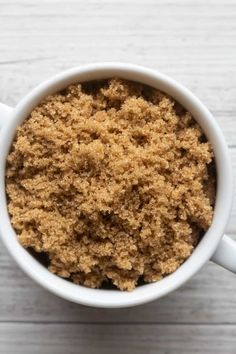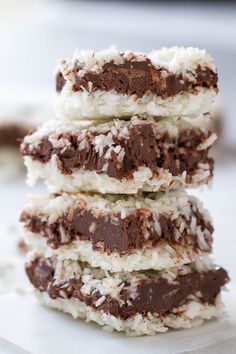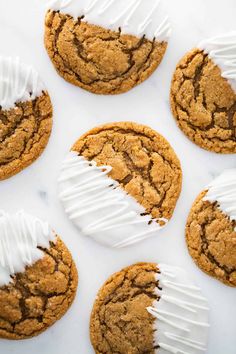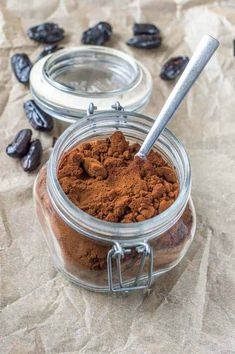Alternatives to Brown Sugar

Sugar is a common culinary component that adds sweetness to our lives daily. We use it as a sweetener in baked products to keep them moist and soft and in sweets, beverages, jams, and a variety of other dishes. However, sugar is more than just a sweetener. It is used for various reasons in food production.
Sugar serves as a preservative, coloring agent, flavoring ingredient, fermentation aid, and bulking agent. The sugar cane juice and sugar beet plants are extracted to make it.
Brown sugar is often used in sauces, baked products, marinades, baked beans, beverages, and other dishes. If your recipe requires brown sugar and you don’t have any on hand, you can substitute alternative sweeteners.
Coconut sugar, muscovado sugar, white sugar, white sugar & molasses, white sugar, and maple syrup are the finest brown sugar replacements, as are some of the following products.
Brown Sugar Substitute
Sugar is classified into distinct varieties based on the amount of molasses present and the cleaning, crystallizing, and drying processes. Brown sugar is one form of sugar. It is created by combining refined white sugar crystals with sugar cane molasses.
Brown sugar comes in two varieties, each with a distinct molasses concentration. Light brown sugar contains 3.5 percent molasses by weight and is ideal for baking. Other than that, dark brown sugar contains 6.5% molasses by weight. It may be used to flavor and color barbecue sauces and other dishes.
Dark brown sugar has a dark color and a caramel flavor, whereas light brown sugar has a lighter color and flavor.
Sugar will slightly alter the color, texture, and flavor of the food. If you don’t have any of these on hand, use brown sugar replacements in your recipe for a taste boost.
1. Coconut sugar

Coconut sugar is manufactured from the sap found in coconut palm blooms.
This plant-based sugar includes trace calcium, zinc, potassium, and iron levels. Coconut sugar and brown sugar have caramel smells and comparable brown tints.
You may use coconut sugar for brown sugar in sauces, cakes, cookies, baked goods, hot beverages, and any other recipe that asks for brown sugar.
The only disadvantage is that it is more expensive than brown sugar.
2. Muscovado sugar
Muscovado sugar is a dark brown, partially refined, or unrefined cane sugar with a pronounced molasses-toffee flavor. You have the option of using light or dark muscovado sugar.
Muscovado sugar can be used instead of brown sugar in cookies, cakes, baked goods, marinades, barbecue sauces, and a variety of other sweet and savory recipes. In a 1:1 ratio, replace brown sugar with muscovado sugar.
3. White sugar
White sugar is a perfect alternative for brown sugar if you don’t have any other sweeteners on hand. It is made up of sugarcane or sugar beets and gives a sweet flavor to various baked goods, desserts, and drinks.
White sugar is used in various recipes to help retain moisture and make them smooth and fluffy. They also utilize white sugar to provide a lovely gold hue, nutty taste, and crisper texture.
White sugar can be used in brown sugar at a 1:1 ratio.
4. White sugar and molasses

Brown sugar may be made from white sugar and molasses. Light brown sugar is made by combining one cup of sugar and one spoon of molasses.
If your recipe requires dark brown sugar, use two teaspoons molasses and one cup sugar. This homemade brown sugar may be used in any recipe that asks for brown sugar.
5. White sugar and maple syrup
You may also combine the white sugar and maple syrup when you require brown sugar. One cup of sugar and one spoonful of maple syrup is required.
Combine them and use them in place of brown sugar in your dinner. Your recipe will have a different hue and a unique caramel-vanilla taste.
6 . Agave nectar
Agave nectar is often used in baked products, sauces, dressings, desserts, cocktails, and drinks.
Light, dark, amber, and raw agave nectar are all available. They all have unique hues and tastes and work well in various sweet and savory cuisines.
To create lovely honey or maple syrup flavor, combine one cup brown sugar with two-thirds cup agave nectar, depending on the type of agave nectar.
7. Honey
Honey is a natural sweetener that is a better choice than sugar.
It is used in various baked items, marinades, drinks, sauces, and dressings. There are several sorts of honey, each with its distinct color, flavor, and texture.
It may have fruity, floral, woody, nutty, or earthy flavors depending on the type of plant from which the bees collected nectar. Brown sugar can be substituted for honey in various sauces, marinades, baked products, and other recipes.
Since honey is sweeter than brown sugar, useless in the recipe. Use 34 cups of honey to replace one cup of brown sugar.
8. Maple syrup
Maple syrup is made up of the sap of maple trees. The sap is cooked until it thickens to form a syrup. There are four sorts of maple syrup: golden, amber, dark, and very dark, each having its distinct color and flavor.
Maple syrup has a caramel flavor with a hint of vanilla and a light golden-dark brown tint in general. Maple syrup may be used as a topping for waffles and pancakes and in salad dressings, barbecue sauces, and baked products. It is also used to glaze the meat.
As a replacement for one cup of brown sugar, use two-thirds of a cup of maple syrup.
9. Turbinado sugar

Turbinado sugar is manufactured from the juice collected from sugar cane. It is also known as raw sugar because it is less refined, with coarser crystals and a dark brown tint.
Turbinado sugar has a mild caramel flavor and contains fewer molasses than brown sugar. It is often used in baked products, hot drinks, sweets, barbecue sauces, meat rubs, and toppings.
Because of the coarse crystals, turbinado will have a drier and grainier texture when used in place of brown sugar. You may mill the sugar to get a finer texture. Alternatively, dissolve it in a tiny amount of liquid such as warm water, oil, or melted butter.
In a 1:1 ratio, replace brown sugar with turbinado sugar.
10. Demerara sugar
Demerara sugar, like turbinado sugar, is little processed and has a light brown hue, toffee flavor, and crisp texture. Its sugar crystals are bigger than turbinado sugar’s sugar crystals.
Demerara sugar, which has a deeper molasses taste than turbinado sugar, is a helpful substitution for brown sugar in various baked products such as biscuits and cheesecake bases as a sweetener for coffee and tea and as a topping for desserts. Demerara sugar can be used in place of brown sugar at a 1:1 ratio.
11. Palm sugar
Palm sugar is less sweet than brown sugar and has a caramel flavor with a tinge of maple. It is created by boiling the sap of palm blossoms until it thickens.
Palm sugar is unrefined since it has been barely processed and does not include any chemicals. It is often marketed as syrup and in the shape of cakes and bricks.
This sugar is used in a variety of sweet and savory cuisines, including sweets, drinks, candies, rice dishes, curries, baked products, sauces, and a variety of other sweet and savory dishes.
In a 1:1 ratio, palm sugar can be substituted for brown sugar.
12. Jaggery
Jaggery is a kind of sweetener found in Africa and Asia.
It is often manufactured from sugar cane. In certain areas, though, it is manufactured from the date palm. The sugar cane juice is heated before being poured into molds to cool.
Jaggery is available in liquid, granule, and solid block forms. This item has a taste comparable to brown sugar and can range from light golden to dark brown.
Jaggery is often used in baked products, sweets, meat and vegetable sauces, hot beverages, and candies. Brown sugar can be substituted for jaggery at a 1:1 ratio.
13. Molasses
Molasses are produced by sugar extraction from sugar beets and sugarcane. Sugar cane juice is typically boiled and crystallized three times to extract sugar. As a result, molasses can vary in flavor, color, and nutritional value.
Because the molasses extracted after the initial boiling process has the lightest color, it is referred to as light molasses, and it has a high sugar content and a thin texture.
Dark and blackstrap molasses are the other two forms of molasses. After the second boiling, dark molasses is removed. It’s deeper in color and has less sugar than light molasses.
Blackstrap molasses have a thicker texture, a darker color, and less sugar than the other two molasses.
Molasses has a sweet and smokey taste that complements a variety of pastries, baked goods, barbecue sauces, baked beans, and other sweet and savory foods.
For the best results, replace one cup of brown sugar with two teaspoons of molasses in your recipes.
14. Date sugar

Date sugar is prepared by grinding dried dates. It has a light brown hue and a sweet flavor akin to butterscotch. Date sugar may not melt as easily as brown sugar, but it adds a sweet flavor and a gorgeous color to your dish.
Date sugar is a nutritious substitute for brown sugar that may be used in various baked items, sauces, sweets, and marinades.
15. Sukrin gold
Sukrin gold has a flavor, color, and texture comparable to brown sugar. This natural, low-calorie, gluten-free sweetener is mainly erythritol, with little stevia and malt.
Sukrin Gold is free of artificial colors, chemicals, and preservatives. It’s delicious in various cakes, baked products, teas, coffees, barbecue sauces, and other dishes.
Brown sugar can be substituted with Sukrin gold at a 1:1 ratio.
Summary
Because of its flavor and color, brown sugar is a prominent component in both sweet and savory dishes.
If you don’t have brown sugar, you can use some of the substitutions listed in this article to give your dish the required flavor, texture, and color.
Dark brown sugar can be substituted with light brown sugar, molasses, or maple syrup. In contrast, demerara sugar, turbinado sugar, and light agave nectar can be used in place of light brown sugar.











